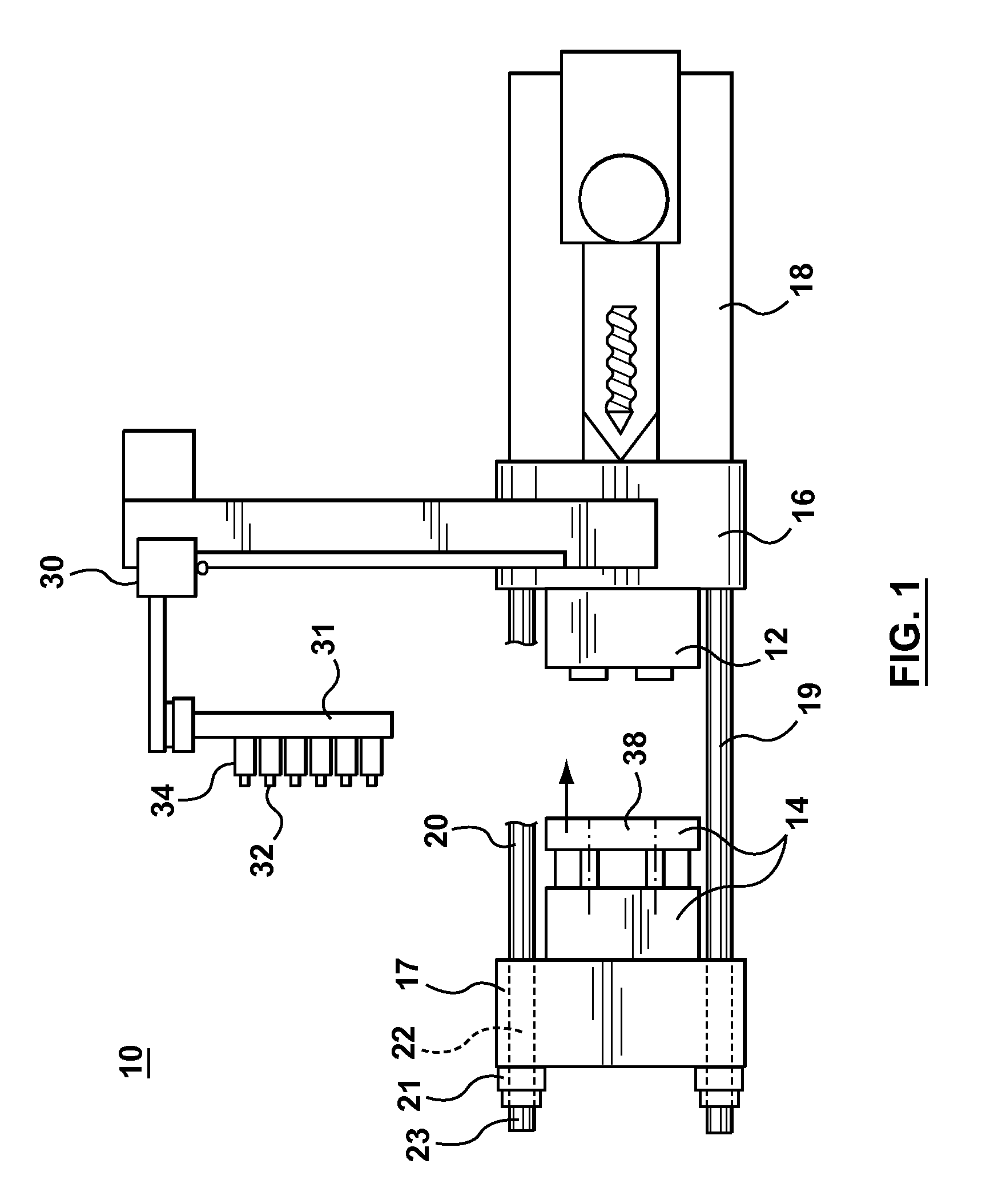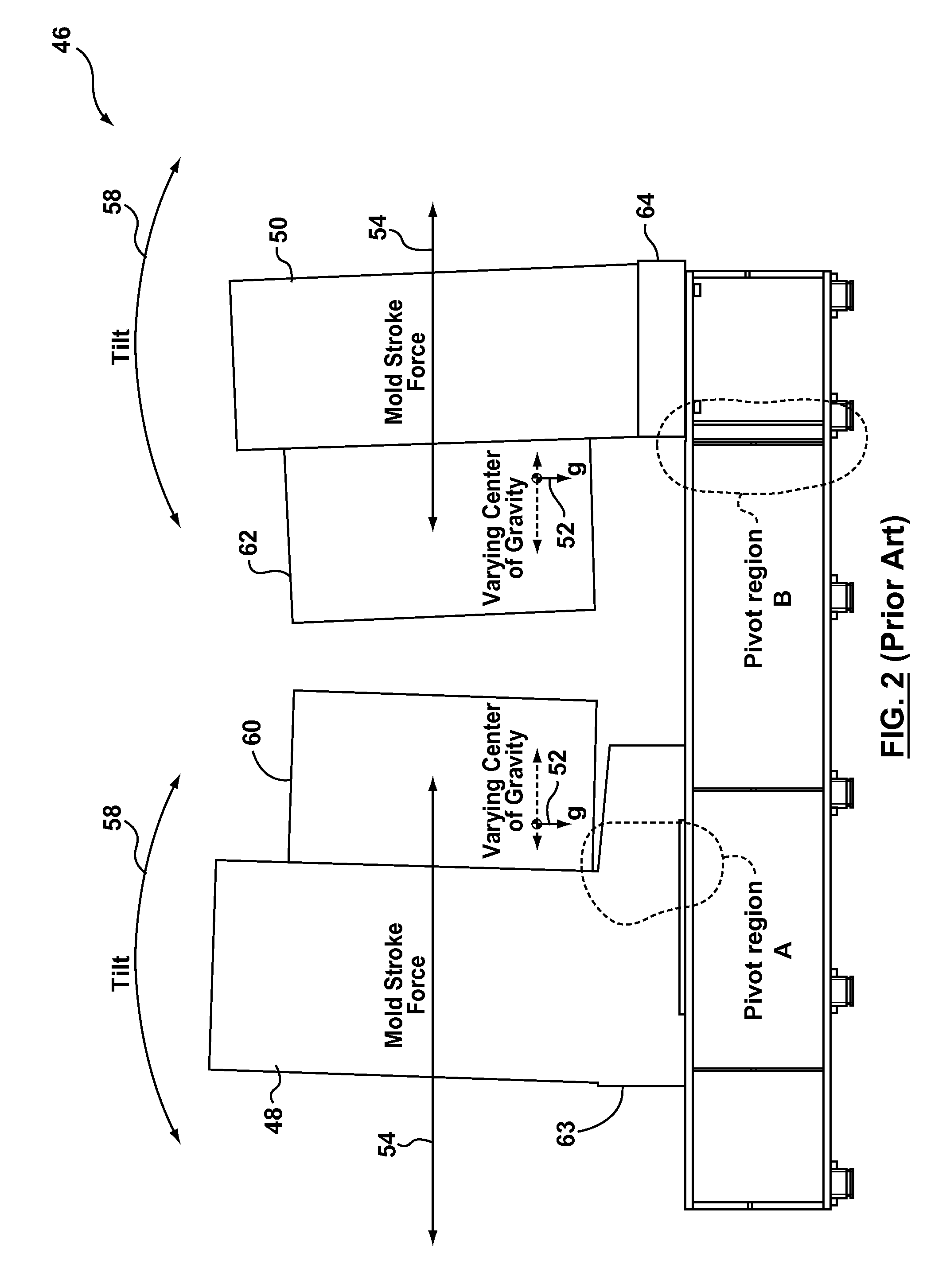Platen assembly, molding system and method for platen orientation and alignment
a platen and molding technology, applied in the field of mechanical devices, can solve the problems of rework or rejection of molded parts, exacerbate mold wear, and large molds, and achieve the effects of improving mold alignment, improving mold alignment, and increasing the weight of the overall platen design
- Summary
- Abstract
- Description
- Claims
- Application Information
AI Technical Summary
Benefits of technology
Problems solved by technology
Method used
Image
Examples
Embodiment Construction
[0035]FIG. 1 shows a typical injection molding machine 10 that can be adaptable to support platen anti-tilt mechanism according to the various embodiments of the present invention.
[0036]Like conventional machines, during each injection cycle, the molding machine 10 produces a number of plastic parts corresponding to a mold cavity or cavities defined by complementary mold halves 12, 14 located within the machine 10.
[0037]Since platen tilting is particularly problematic with heavy molds with large overhanging regions (extending outwardly of the mold mounting faces), the molding machine can be considered (for reasons of explanation only and without limitation) to be a large tonnage molding machine supporting a mold that is in excess of 20 tons and more typically a mold having a mass in the region of between about 40 tons to 100 tons.
[0038]FIG. 1 is shown for exemplary purposes as a two-platen system, although it could be a three-platen system or a molding system containing a centre-sec...
PUM
| Property | Measurement | Unit |
|---|---|---|
| mass | aaaaa | aaaaa |
| mass | aaaaa | aaaaa |
| centre of gravity | aaaaa | aaaaa |
Abstract
Description
Claims
Application Information
 Login to View More
Login to View More - R&D
- Intellectual Property
- Life Sciences
- Materials
- Tech Scout
- Unparalleled Data Quality
- Higher Quality Content
- 60% Fewer Hallucinations
Browse by: Latest US Patents, China's latest patents, Technical Efficacy Thesaurus, Application Domain, Technology Topic, Popular Technical Reports.
© 2025 PatSnap. All rights reserved.Legal|Privacy policy|Modern Slavery Act Transparency Statement|Sitemap|About US| Contact US: help@patsnap.com



